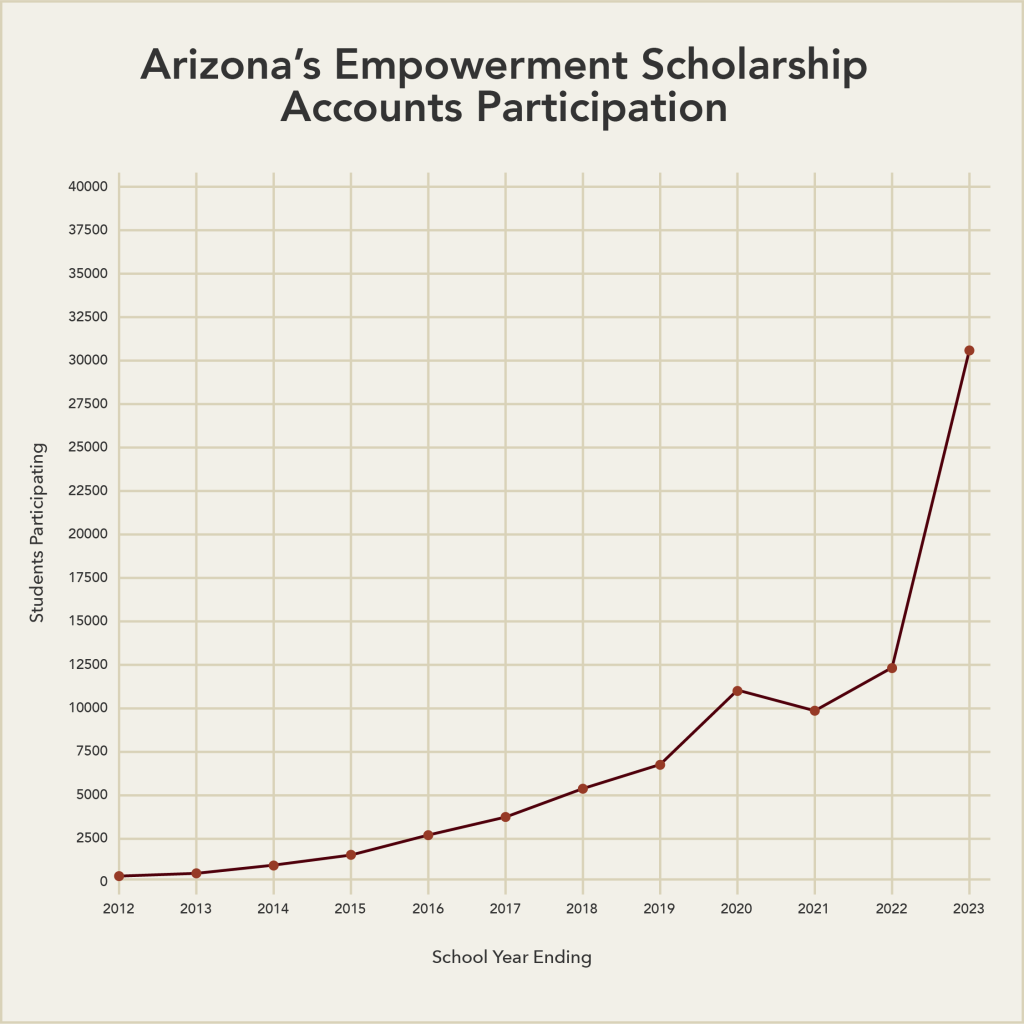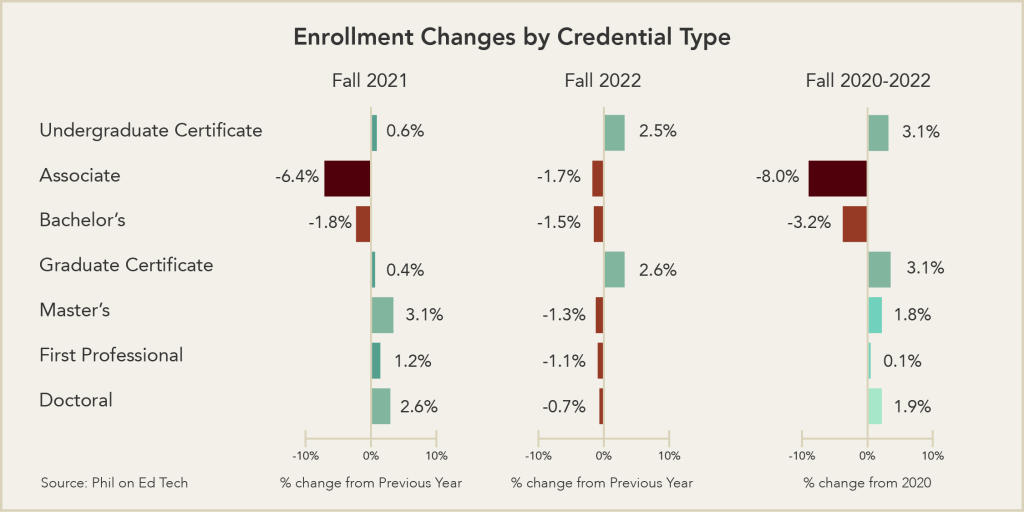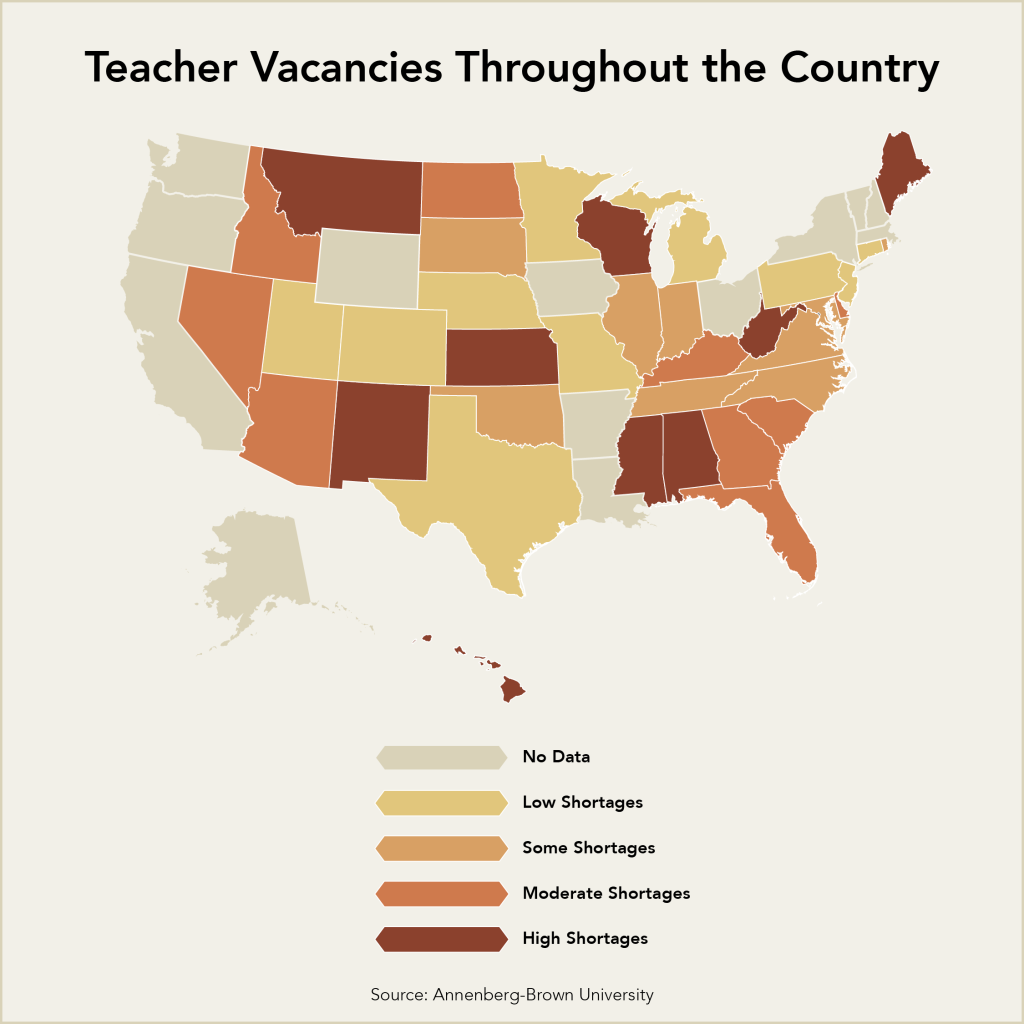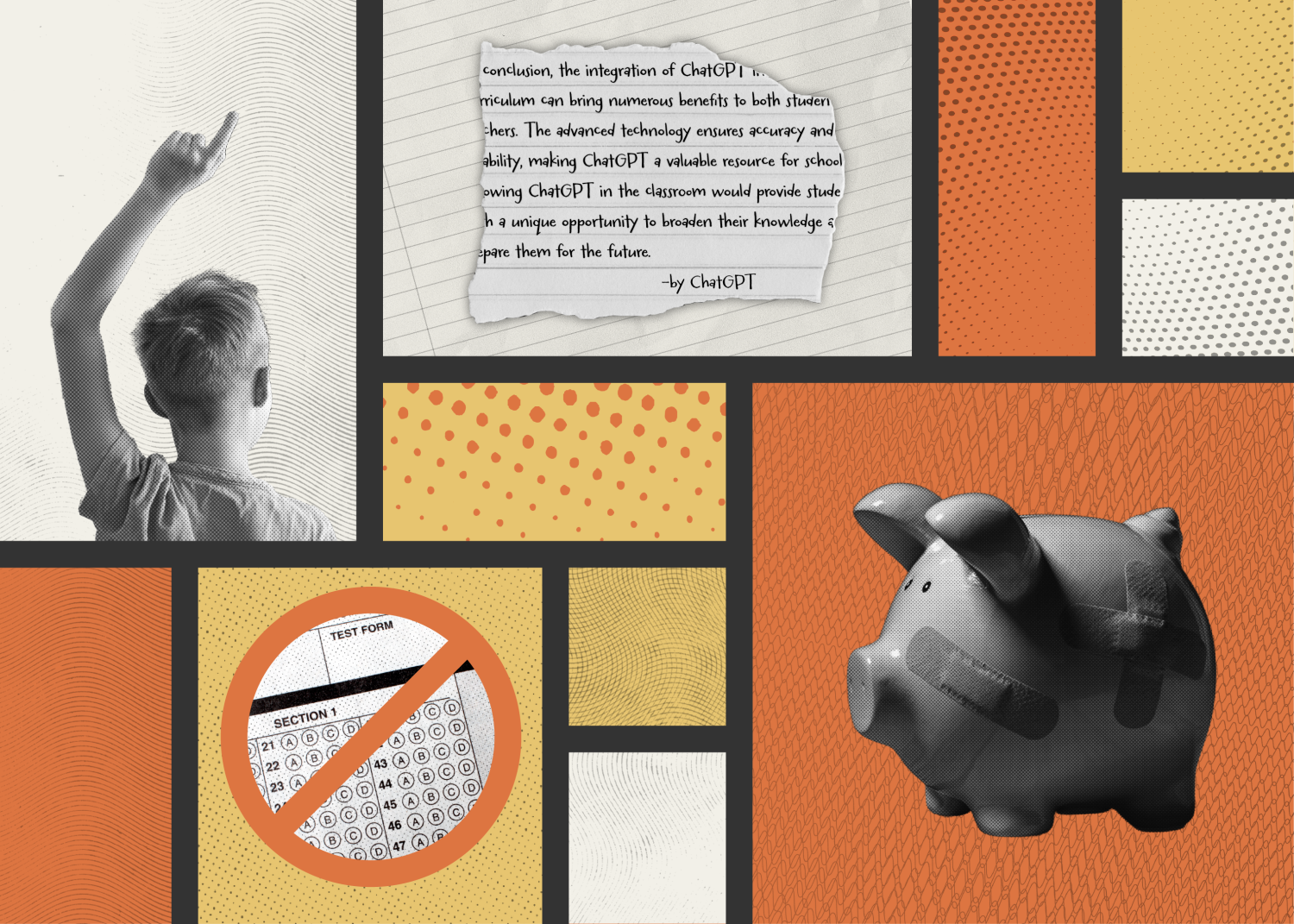This article originally appeared on Imbroglio. Imbroglio is a newsletter from The Branch about how we bring about the education revolution. Most of our posts will focus on the future of K-12 and higher education, but we’ll also cover the imbroglio itself — the politics, misdirection, the excuse-making, the mediocrity. Occasionally we’ll also meander into the general science of learning outside of the traditional education system.
Writing in exile during the Bolshevik revolution, Vladimir Lenin famously noted that “there are decades when nothing happens, and there are weeks when decades happen.”
I spent my K-12 glory years during a decade in which nothing revolutionary seemed to happen. Ironically, when I first signed up for the work, I thought I was joining a revolution. I quit my job in the Obama administration in early 2010 and moved to Tennessee just as the school reform movement peaked. Tennessee had recently won a Race to the Top grant, prompting a flood of eager, messianic educators like myself, who wanted to transform the system but would spend the next decade scaling innovations from prior decades. We did meaningful work and, in some cases, dramatically improved the odds for many kids, yet, with few exceptions, we didn’t fundamentally challenge the prevailing K-12 model.
If our movement had an intellectual father, it was Jim Collins. The buttoned-up author of Good to Great was a constant topic of conversation in conferences and workshops that underscored the need for sustained, incremental improvements and steady leadership. To be fair, the unsexy work of scaling what works is essential (especially when it helps kids), and some significant innovations did take hold throughout the decade, such as the (rocky and fraught) adoption of the Common Core standards. But even those changes had been cooked up and set in motion years before.
As we approached the decade’s end, the common debates around the K-12 policy and practice felt small and repetitive. In many cities, warring political factions had reached a stalemate and, at times, seemed bored by their own wars of attrition.
Then, 2020 threw the entire K-12 system into a wood chipper. In the early days of the lockdown, every educator I spoke to said the existing system wouldn’t emerge intact from the pandemic, but they were too busy with existential issues to think clearly about the changing landscape. Now that we’ve gotten our feet under us and secured enough distance from the lockdowns, we can look back (and ahead) and say that the past three years have unleashed something genuinely different and destabilizing.
In this post, I’ll outline the four most important forces driving that change.
Education Savings Accounts
In the past few weeks, Iowa and Utah have passed legislation giving parents access to education savings accounts (ESAs), joining Arizona, the first (and, until now, the only) state in the country to make ESAs universally accessible to students.
What are ESAs? Here’s a helpful explainer from Education Week:
“In an ESA program, the state sets aside money, usually based on its per-pupil funding formulas, in individual accounts for participating students. Their parents or guardians can then withdraw that money to spend on approved educational expenses. That may be private school tuition, but it may also be used for tutoring, online courses, transportation, or even some types of therapy. In addition to helping families send their children to private school, an ESA program can also allow them to home school or cobble together a hybrid public-private education.”
ESAs are more expansive than school vouchers, which tend to be more narrowly tailored and usable only for paying tuition at a private school.
Over a dozen states have introduced ESA legislation over the past year. If the current trends continue, ESAs could spread to nearly every red state, drawing significant shares of families out of the public school system. Consider Arizona:

Now, 30,000 exits isn’t a lot, considering that almost one million students attend public schools in the state, but if the exponential growth trend continues, its effect on Arizona’s system will be more dramatic than that of any statewide school choice regime we’ve ever seen. And if other states follow Arizona’s trajectory, we’re in for a full-blown disruption of K-12 schooling as we know it.
There isn’t a lot of great polling on this issue yet, but one poll from YouGov (commissioned by yes. every kid., a pro-ESA group) found that Americans support ESAs by a four-to-one margin, with a third undecided. Paradoxically, the poll found that ESA support is stronger among Democrats than among Republicans, which makes me somewhat skeptical of the data because there’s no chance that Democratic politicians will support ESAs. In fact, progressives have begun to elevate opposition to these as a national cause. It’s also worth noting that the school reform coalition is split on ESAs—driven by worries that the issue will imperil their fragile political alliances.
The issue is an outgrowth of the larger Republican project around parent choice that grew to prominence through Glenn Youngkin’s successful gubernatorial campaign in Virginia and has become a hallmark of Governor Ron DeSantis’s administration. In this sense, ESAs are part of a broader conservative narrative of distrust of the public school system, often accompanied by parents’ bill-of-rights laws, curriculum transparency bills, and other more controversial pieces of legislation.
Needless to say, we can expect the issue to play a significant role in 2024, from the presidential contest to the down-ballot races.
The Decline of College?
On today’s episode of Lost Debate, I spoke to Todd Rose from Populace. His firm recently released a study that unearthed some startling changes in Americans’ attitudes toward higher education:
“Before COVID, respondents ranked being prepared to enroll in a college or university as their 10th highest priority for K-12 education. In post-COVID America, this is no longer the case. When given 57 priorities for children’s K-12 education, Americans ranked it as #47. However, they believe it is other people’s third-highest priority, demonstrating a deep societal misunderstanding of one another.”
Todd and I discussed some theories about what’s driving the shift. One factor we considered was whether debates around student loan forgiveness may have highlighted how debilitating the runaway costs of higher education tuition have been for our young people. Those costs likely seemed all the more absurd during the pandemic, when families were shelling out tens of thousands of dollars for Zoom classes. Add to the mix a sustained right-wing attack on higher education, and you can see why the public is skeptical of college.
I know that this piece is about trends upending K-12, but if parents and kids question the value of a university education, that can and should reverberate through the rest of the system.
The most durable added value of higher education will likely continue to be as credentialing and validating mechanisms for employers. There is, after all, only one path to becoming a physician in this country. This distinction may explain why non-certificate associate’s and bachelor’s programs are hemorrhaging students at the fastest rates:

Until recently, most colleges and universities believed that the demand for their products was relatively inelastic. That’s why they’ve had no trouble jacking up tuition across the board for so long. However, consumers may be hitting a breaking point. Over the past 10 years, college enrollment has dropped from 20.6 million students in 2012 to an estimated 18.2 million in 2022. That’s a net loss of about 2.4 million students. For-profit colleges have taken the brunt of the losses (showing that at least some categories of customers are becoming more price- and quality-conscious). Online-only colleges like Southern New Hampshire saw the most significant gains.
In short, different segments of this sector seem more elastic than others. I predict that the carnage will continue to be most severe in programs where the government doesn’t require a degree. In a future post, I will discuss these categories in greater detail and examine enrollment and price data by profit model, delivery method (e.g., online vs. in-person), price, and profession.
Unsteady Labor Market
At Lost Debate, we’ve done many segments attempting to determine whether we have a national teacher shortage. This has been a challenging task as the available data are extremely poor. Neither the federal government nor the majority of states collect and share raw numbers on the extent of teacher shortages. Available evidence suggests that by the middle of last year, we had 36,000–52,800 vacant positions and at least 163,000 jobs held by underqualified teachers. These estimates reflect the limitations of the available dataset, which excludes 13 states that don’t release vacancy estimates.
What we know for sure is that teacher shortages are unevenly clustered across the country. For example, Mississippi’s vacancy rate is more than 159 times higher than Missouri’s. The problem in Mississippi is so severe that some districts have had to take the depressing step of holding classes without teachers. Here’s a scene from one high school, as reported in the Washington Post:
“It’s near the end of the day at West Bolivar High School, and Jordan Mosley is stuck. The 15-year-old sophomore stares at her laptop and restarts the video. Her teacher that day is a stranger—a nameless long-haired man on the screen. He explains two-column geometry proofs and how students could use the software to complete them. “Prove if the length of AB is equal to the length of EF,” the man says. But there is no one to ask for help in this classroom, where students stare sleepily at laptops amid the din of a portable air conditioner. There is only a teacher’s assistant who can print out additional worksheets if they run into trouble.”
As we reported on Lost Debate, survey data from Mississippi First suggest that this is only the beginning and that growing numbers of the remaining teachers struggle financially and are at significant risk of leaving the profession.
Mississippi may be the most dramatic example, but many other states face alarming teacher shortages. Those most at risk are Alabama, Maine, Wisconsin, Montana, New Mexico, Hawaii, West Virginia, and Kansas.

When we at Lost Debate survey school leaders, the issue of teacher vacancies—and the related issue of teacher burnout—is the number one concern that we hear. That’s regardless of the state. Here are just a few excerpts from recent interviews we’ve conducted with school leaders:
“People are leaving faster than we can replace them, including school leaders.”
“We would benefit from more research to better understand why teachers are leaving…. We need to pay teachers and leaders more so we can attract better talent….”
“After the pandemic, people don’t want to work in a physical space every day—but school has to be that, and teachers have to be in schools. We don’t have the people we need to succeed at scale.”
“More teachers called in for “mental health leave” last year than in the 18 years before. It required us to put in rules around it, so now we have a sick-day policy…. We had more teachers than ever who went on leave mid-year last year; the attrition was 75% higher than usual. Normally, it is 15–20%, but last year, it was more like 27–30%. During the year, there was a lot that people leaving the profession could do—a new job, ed tech, and other cushy stay-at-home jobs.”
Notably, none of the leaders I quote above work in any of the hardest-hit states. Even those schools that aren’t yet displaying teacher vacancies are very likely at risk if the historically low overall unemployment rate continues. This will inevitably lead to more kids without classrooms, larger class sizes, and more under-qualified educators. We can only hope that it will also lead to increased investment in teacher salaries, training, and reforms and improved recruitment and promotion practices.
Artificial Intelligence
Sometimes the cliche is true. As annoying as the hysteria around ChatGPT has been, we can’t ignore the fact that AI tools will have a dramatic impact on our schools. Our company has covered this topic at length in several podcasts, including these two segments on the Lost Debate show. Given the pace of change in the field, we’ve had to revise our takes on the issue every few days.
As of now, I see three different categories of ways in which AI will affect our schools.
Student output: I’ve read dozens of articles like this one predicting that AI will spell the end of the student essay. Though I believe that many of these claims are overblown, there’s no question that schools must adapt student assignments, technology protocols, and academic integrity policies to account for these new tools. Most notably, schools may no longer be able to assume that students alone are completing their writing assignments unless these are done under tightly controlled in-school conditions.
Standards and curriculum: Much of the AI educational commentary has focused on high school English and the role of the essay. However, the most significant disruptions from AI will start with the world that students will enter after their graduation. Will we have fewer radiologists, computer programmers, and finance quants? Will new jobs that we can’t even fathom today be created (like what happened with the ascendance of computer programming)? Educators must monitor these trends carefully and adapt their standards and curricula to ensure that students are truly prepared for this new reality. This, in my opinion, is the most critical work of the AI era—and the most urgent and nimble schools will have a distinct advantage.
School administration: There are a growing number of tools that can help schools take advantage of AI to improve their operations, such as AllHere. Some of these innovations help increase the efficiency of back-office staff and allow parents better access to critical information regarding their children. The key for schools will be how to take advantage of these applications without making interaction with parents impersonal, like what you get from your airline chatbot.
Conclusion
I could go on and talk about other significant forces, such as the rise of homeschooling, the movement against standardized testing, the crisis around student distraction, teenage isolation/depression, and the ascendance of personalized learning platforms. These are all massive shifts that we should add to the list above.
But let’s go back to where I started. I opened this piece by talking about the need for revolution. Yet, many of the forces I describe above aren’t necessarily good or purposeful. Take ESAs, for example. To many readers, these policies could lead to the destruction of public education as we know it. (I’ll give my full opinion on the issue in a future piece.)
That’s why Lenin’s quote is instructive. I wouldn’t describe the change he brought as positive, but no one disputes his impact. What Lenin knew and his enemies didn’t was that when a storm comes, you either harness the wind or get blown away. The Bolshevik movement relied on factors outside Lenin’s control (such as the incompetence and delusions of the Czar and the outbreak of World War I), which is also what those seeking to transform our current education system are doing (e.g., seizing on pandemic frustrations). Lenin also purged his movement of the moderate Mensheviks, which is precisely what education reformers fear is happening with ESAs (charter supporters aren’t radical enough).
I’ve gotten thoroughly carried away with the metaphor. Bottom line: The forces I describe here—whether man-made or extraneous, real or imagined, good or bad—will come together to foment something truly seismic in the K-12 space. If history is a guide, we have a limited window to steer them in the right direction.




